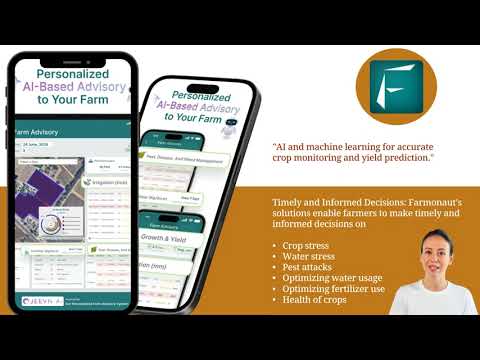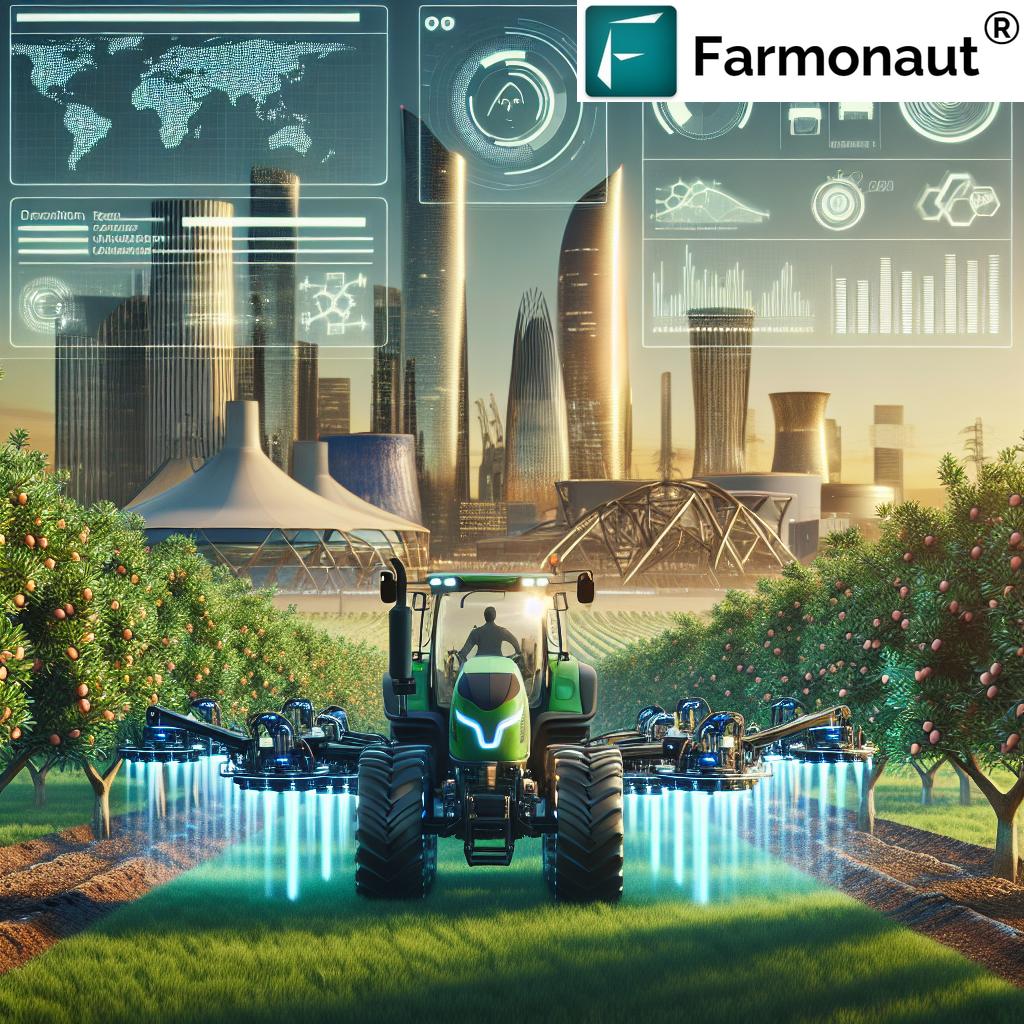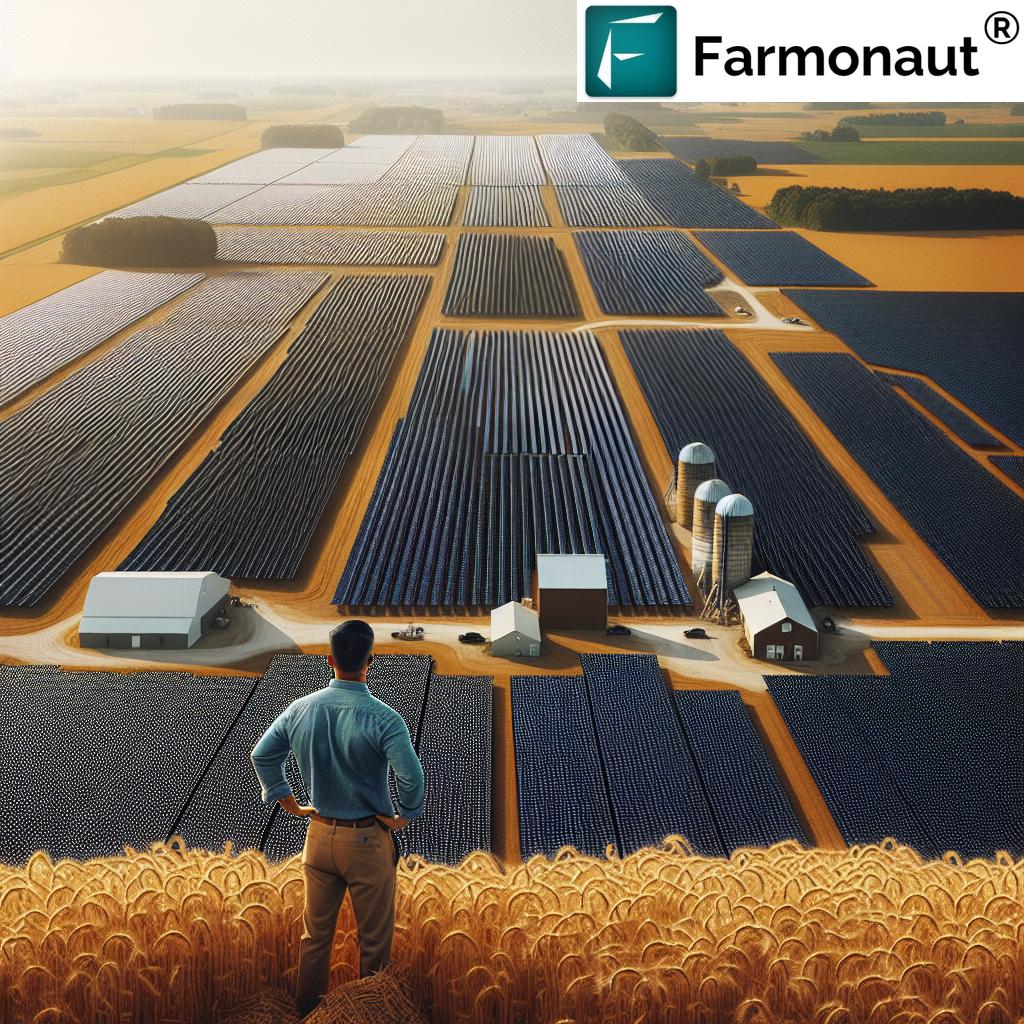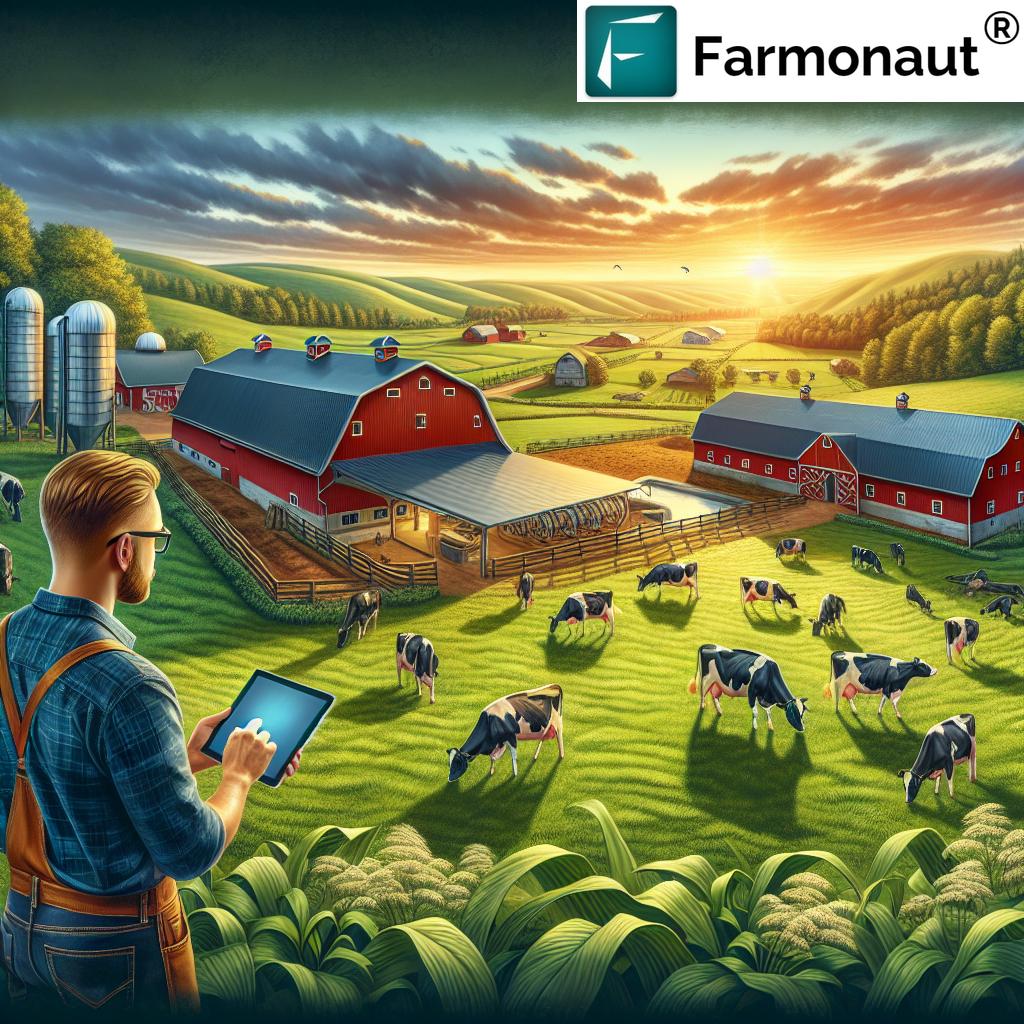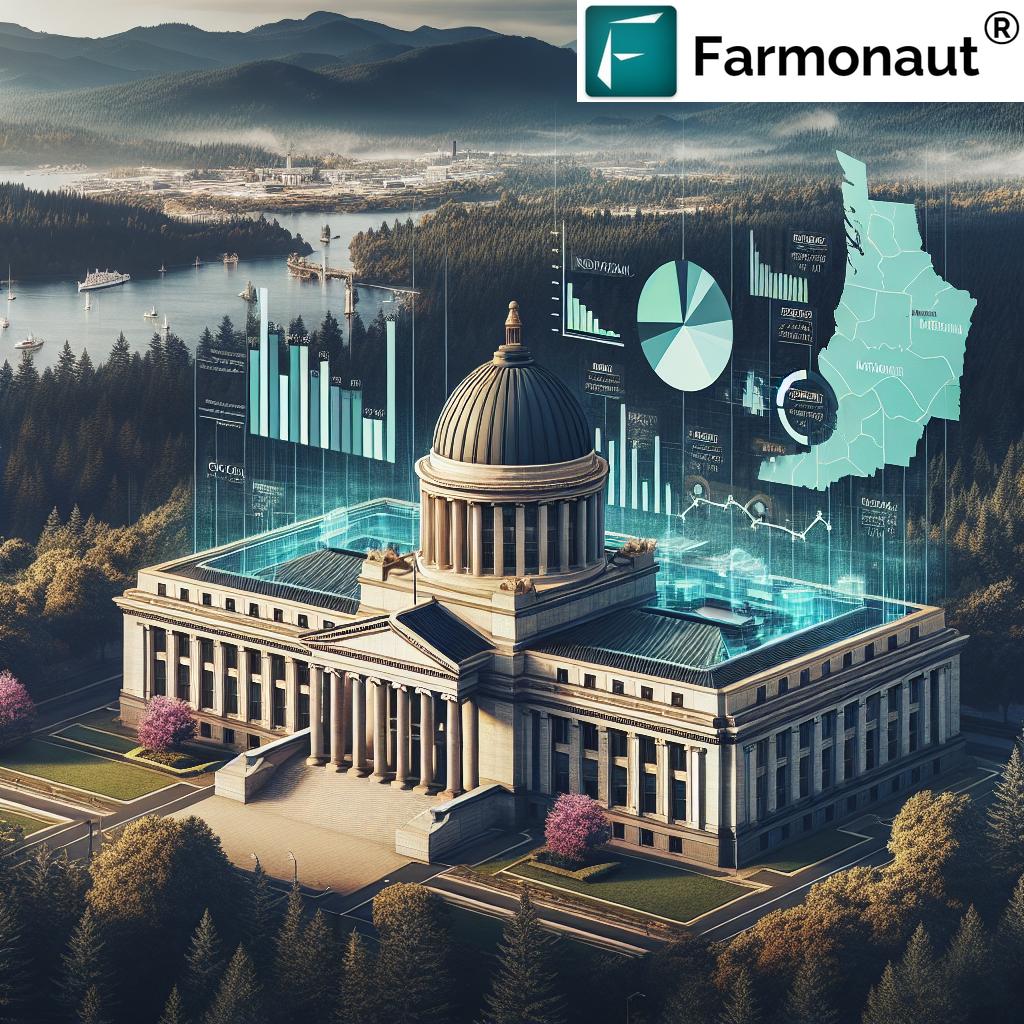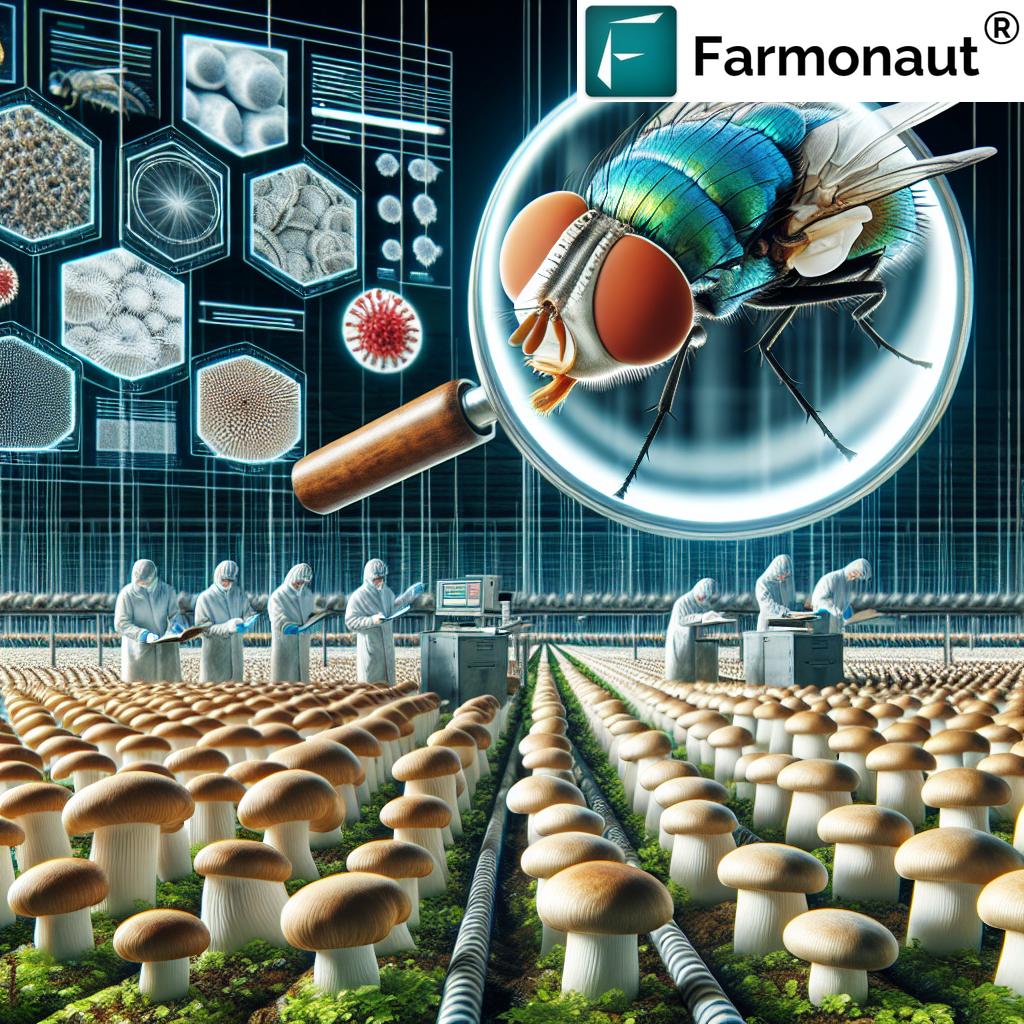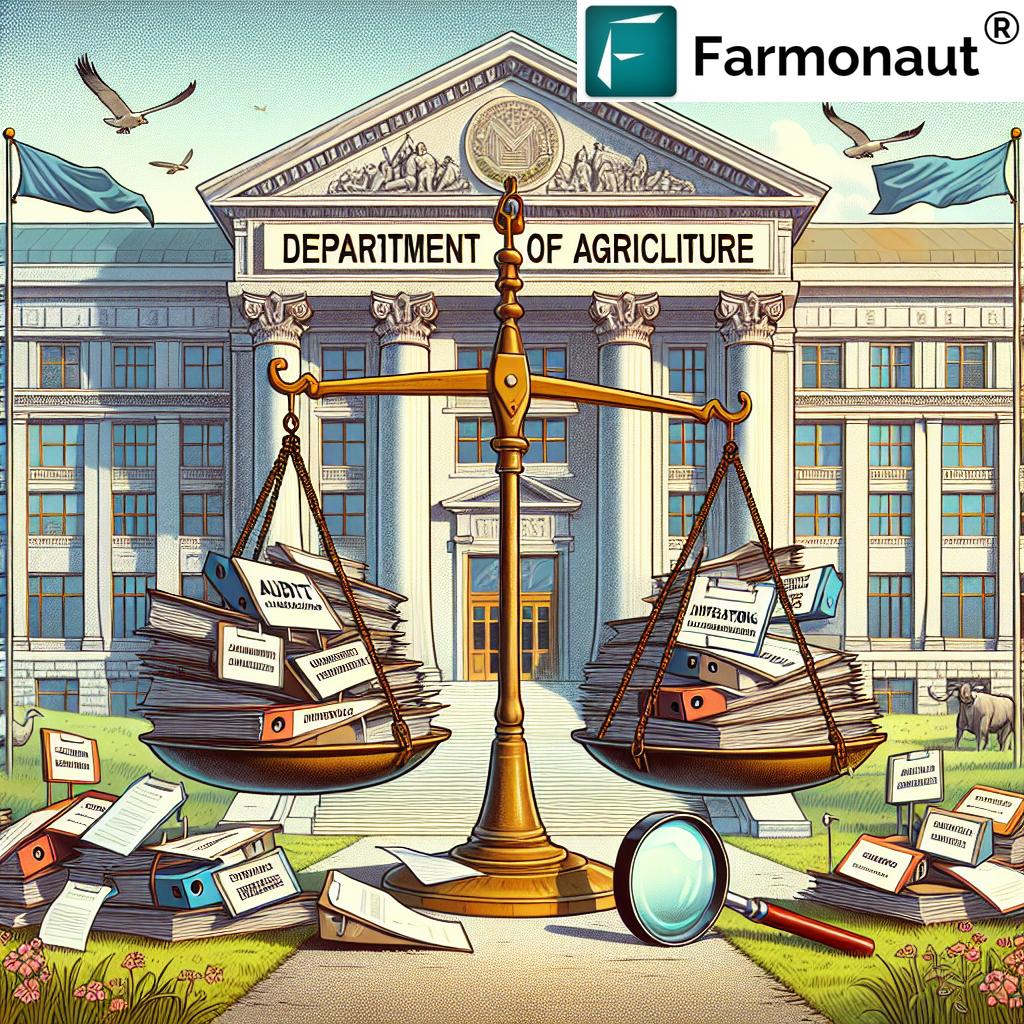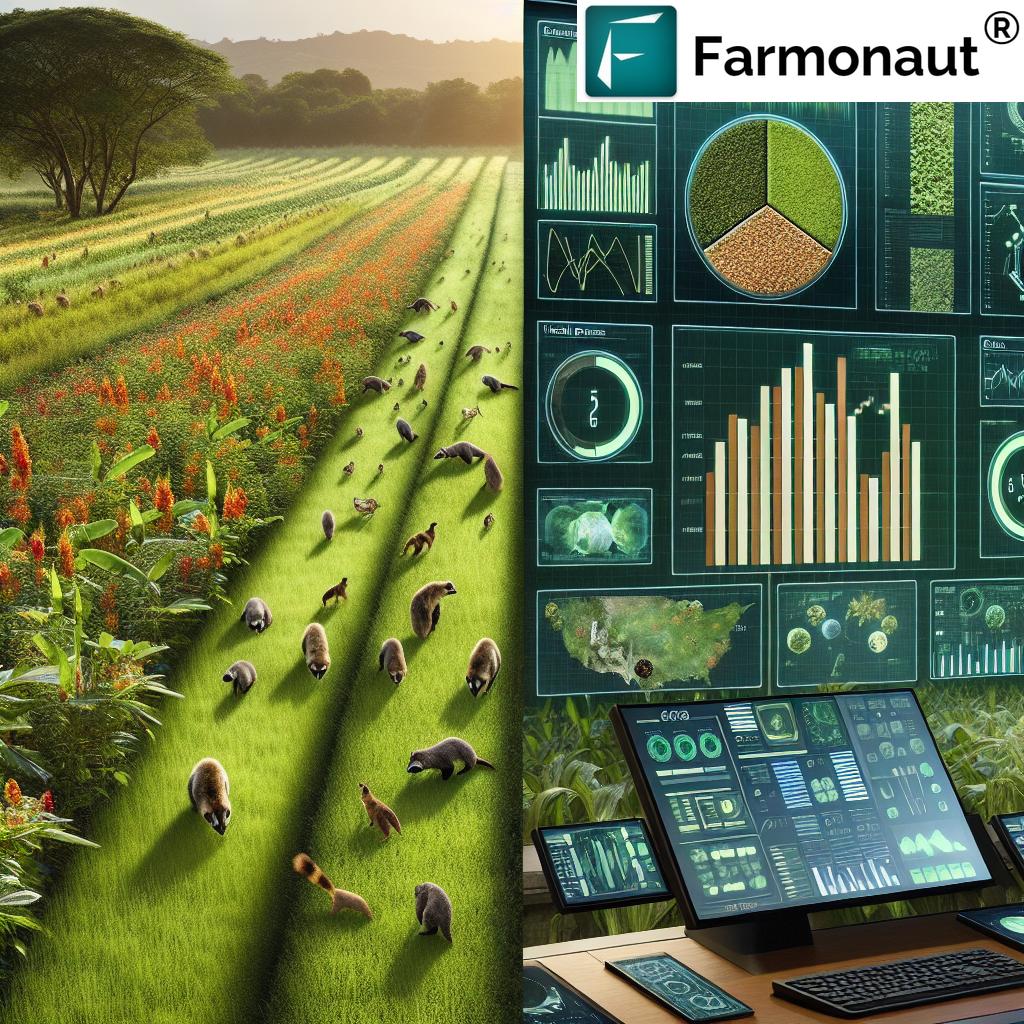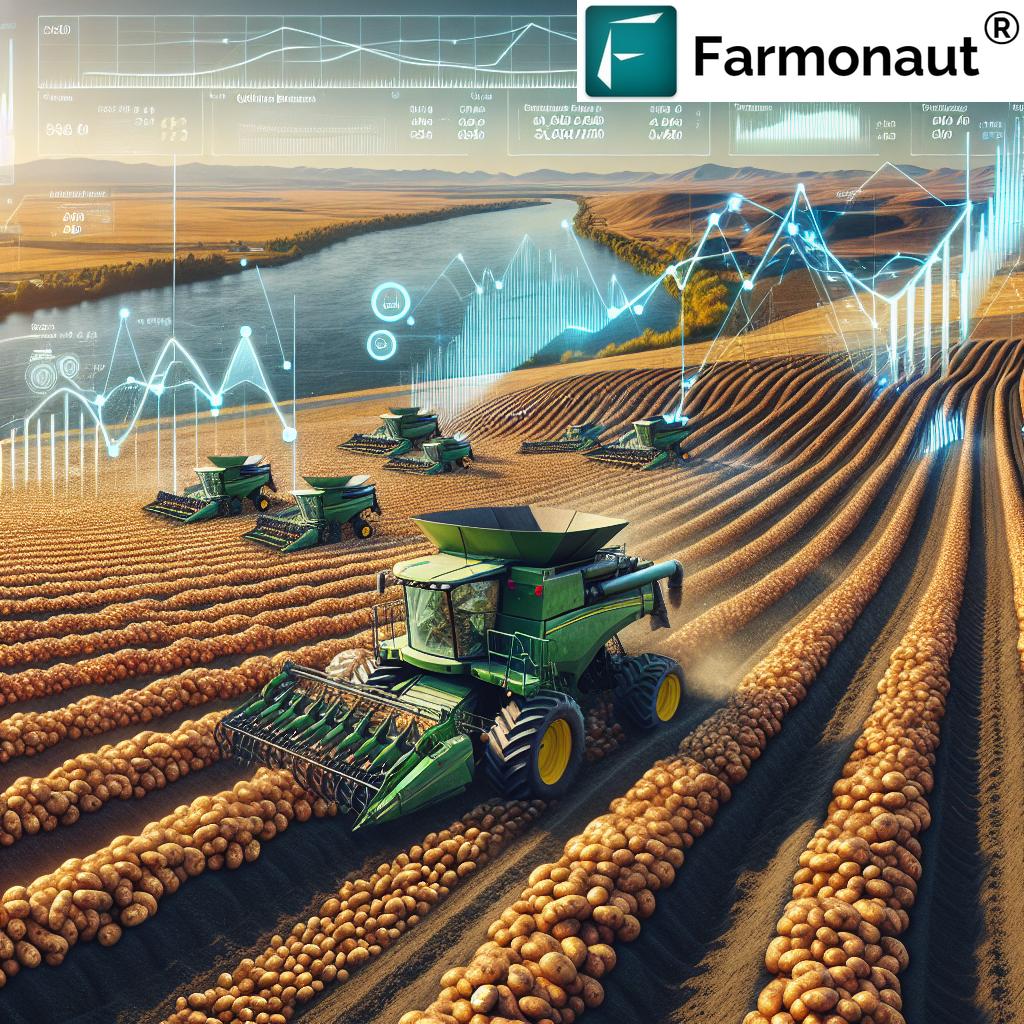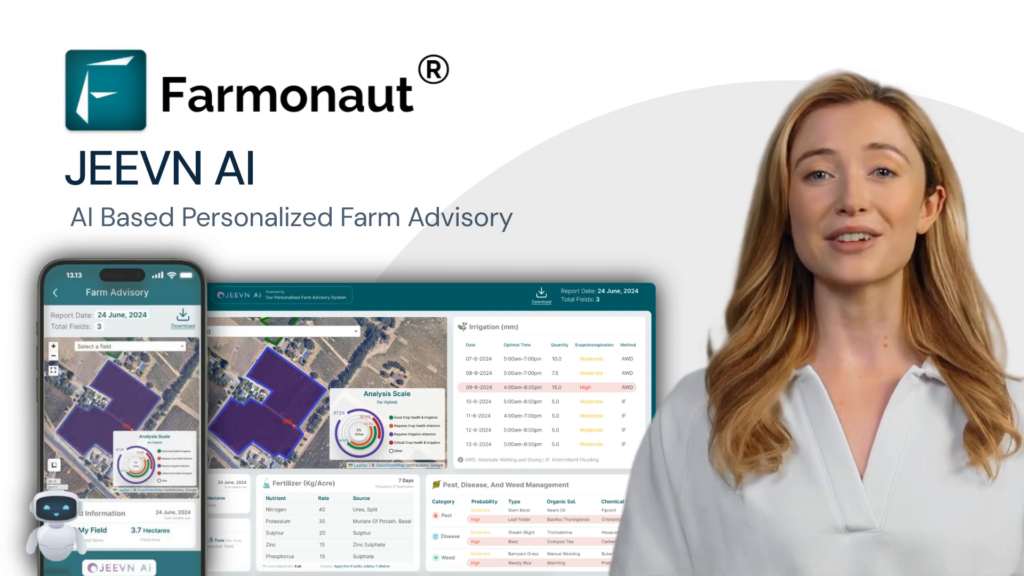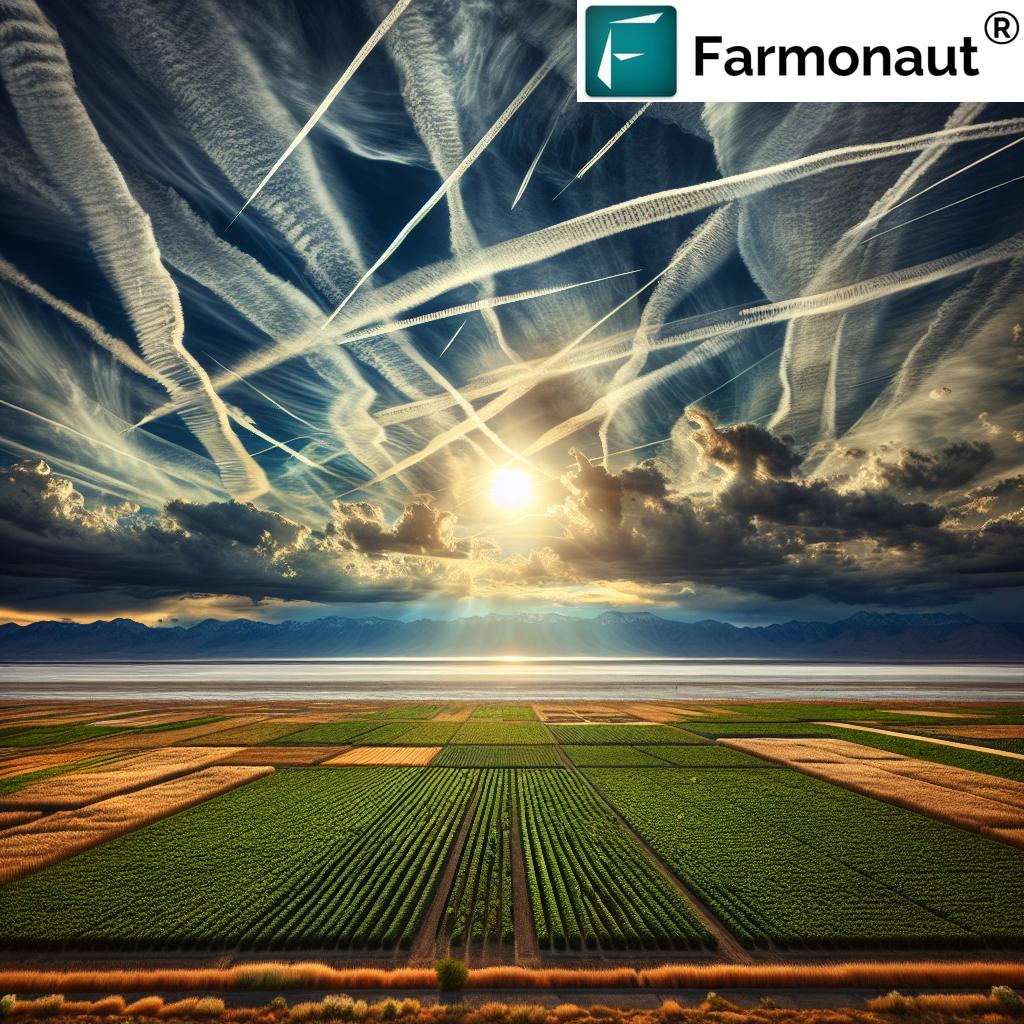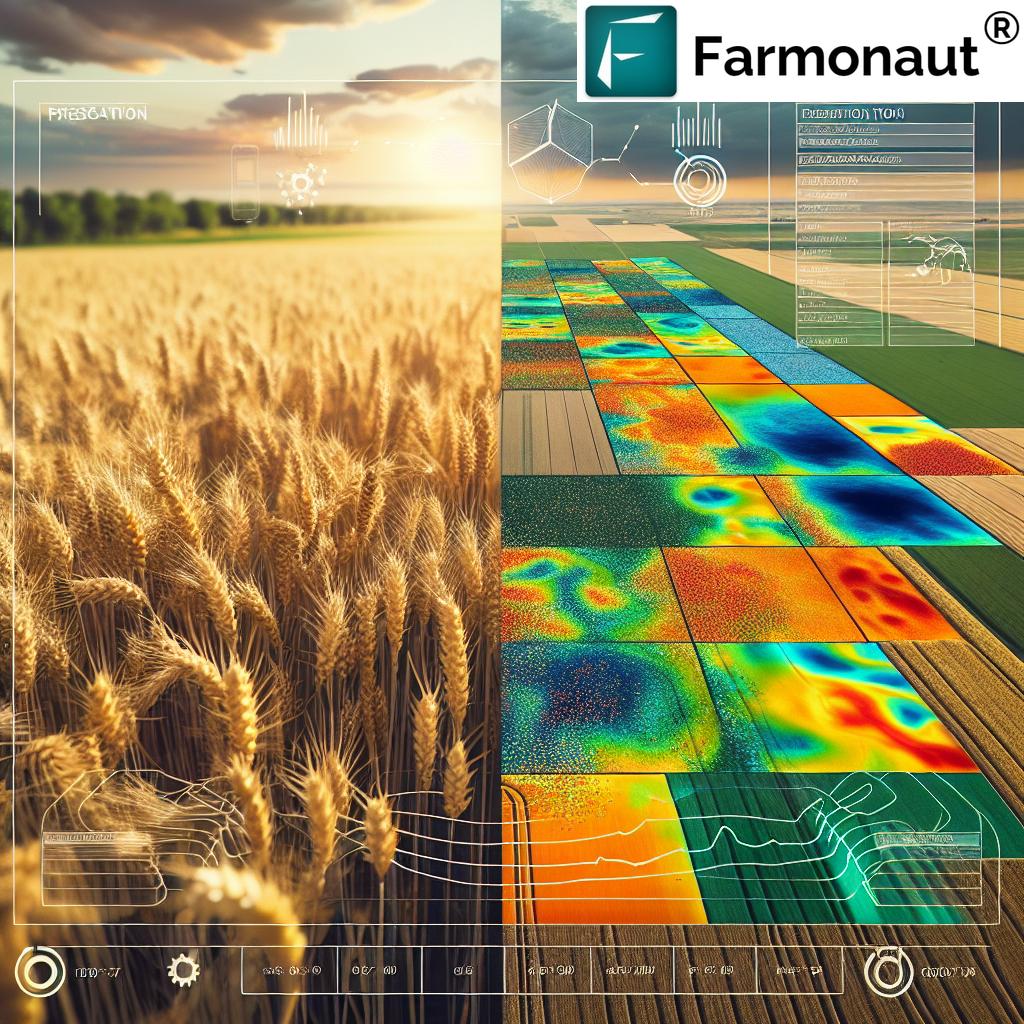US Precision Farming Market Soars: Revolutionizing Agriculture with Advanced Technologies for Sustainable Growth
“The US precision farming market is projected to reach USD 3.42 billion by 2031, revolutionizing agricultural practices.”
In the ever-evolving landscape of agriculture, precision farming has emerged as a game-changing force, propelling the United States towards a future of sustainable and efficient food production. As we delve into the fascinating world of advanced agricultural technologies, we’ll explore how these innovations are reshaping the way we grow crops, manage resources, and ensure food security for generations to come.
The Rise of Precision Farming in the US
The US precision farming market is on an impressive growth trajectory, with forecasts projecting a rise from USD 1.92 billion in 2023 to a staggering USD 3.42 billion by 2031. This remarkable expansion, at a compound annual growth rate (CAGR) of 7.5%, underscores the increasing adoption of cutting-edge technologies across American farms.
Several factors are driving this surge in precision farming:
- The pressing need for increased agricultural productivity
- Growing labor shortages in the farming sector
- A heightened focus on cost efficiency and environmental sustainability
- Advancements in technology making precision tools more accessible and affordable
As we witness this transformation, it’s crucial to understand the key technologies and trends shaping the future of US agriculture.
Cutting-Edge Technologies Revolutionizing Farm Management
The precision farming revolution is built on a foundation of advanced technologies that are changing the face of agriculture. Let’s explore some of the most impactful innovations:
Guidance Systems: Steering Agriculture into the Future
Guidance technology is leading the charge in the US precision farming market. These systems, often based on Global Navigation Satellite System (GNSS) technology, provide farmers with unprecedented accuracy in navigating their fields. The benefits are numerous:
- Improved efficiency in planting, fertilization, and pesticide application
- Reduced overlap and waste of resources
- Enhanced accuracy in field operations, even in low-visibility conditions
- Decreased operator fatigue, leading to increased productivity
When integrated with auto-steering systems, these guidance technologies allow for hands-free operation of farm equipment, further boosting efficiency and precision.
Remote Sensing: Eyes in the Sky for Smarter Farming
Remote sensing technologies are providing farmers with a bird’s-eye view of their crops, allowing for more informed decision-making. Using satellites, drones, and other aerial platforms, remote sensing offers:
- Real-time monitoring of crop health and growth patterns
- Early detection of pest infestations and diseases
- Accurate assessment of soil moisture and nutrient levels
- Improved yield predictions and harvest planning
These insights enable farmers to take proactive measures, optimizing resource allocation and minimizing crop losses.
Variable Rate Technology: Precision in Every Application
Variable Rate Technology (VRT) is revolutionizing how farmers apply inputs such as fertilizers, pesticides, and seeds. By adjusting application rates based on specific field conditions, VRT offers:
- Optimized use of resources, reducing waste and environmental impact
- Improved crop yields through targeted application of inputs
- Cost savings on expensive agricultural inputs
- Enhanced soil health through precise management of nutrients
This technology is a cornerstone of sustainable farming practices, allowing for more efficient use of resources while maximizing productivity.
Weather Tracking and Forecasting: The Game-Changer in Farm Management
“Weather tracking and forecasting have emerged as crucial components in precision farming, driving data-driven decision-making for optimal crop management.”
In the realm of precision farming, weather tracking and forecasting technologies are set to experience the highest growth rate in the coming years. These advanced systems provide farmers with:
- Real-time weather data for informed decision-making
- Accurate predictions for planning farming activities
- Insights into microclimates within fields
- Integration with other farm management tools for comprehensive planning
By leveraging weather data, farmers can optimize planting schedules, irrigation timing, and pest management strategies, leading to improved crop yields and reduced environmental impact.
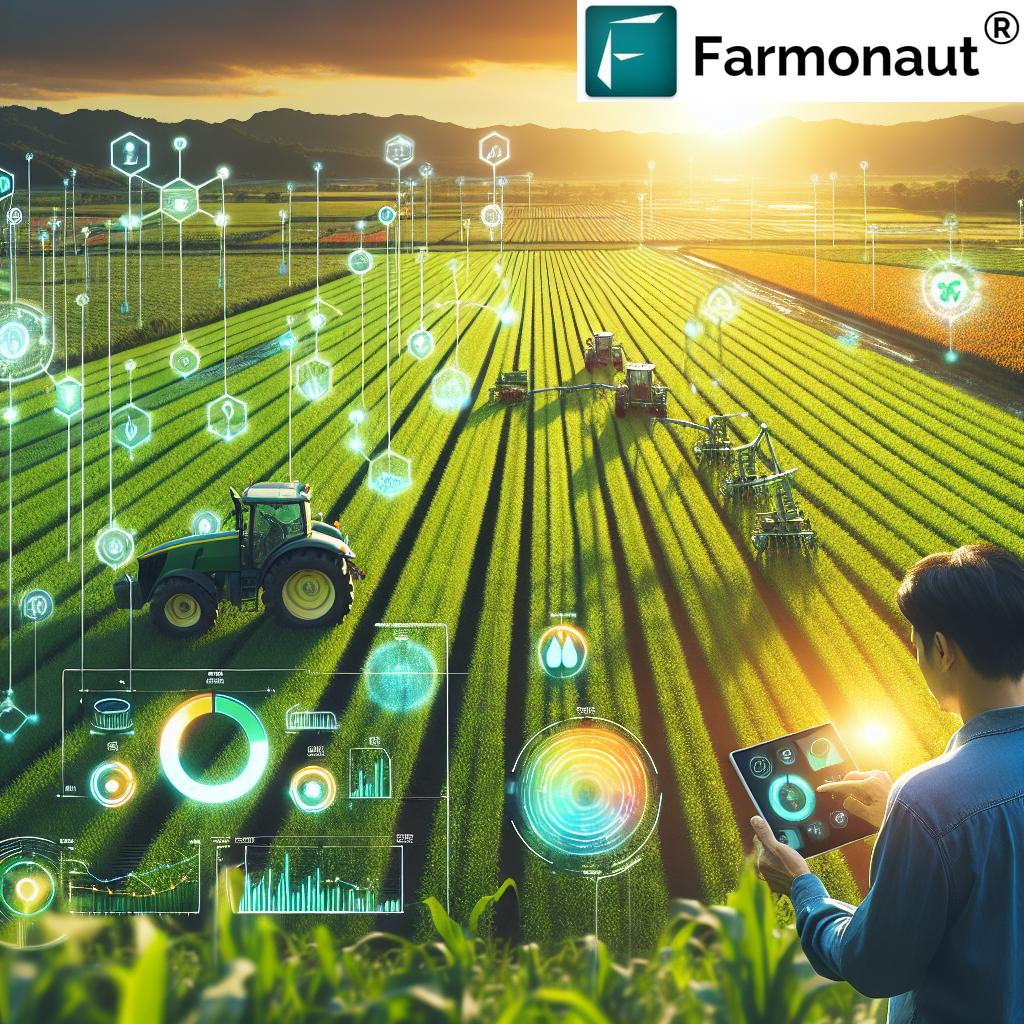
The Role of Advanced Tools in Modern Agriculture
The integration of advanced tools is transforming traditional farming into a high-tech industry. Let’s explore some of the key technologies driving this change:
Drones: Eyes in the Sky for Precision Agriculture
Unmanned Aerial Vehicles (UAVs) or drones have become indispensable tools in modern farming. They offer:
- High-resolution imagery for crop monitoring
- Efficient mapping of large agricultural areas
- Precision application of pesticides and fertilizers
- Quick assessment of crop damage after extreme weather events
The use of drones in agriculture is rapidly expanding, with applications ranging from soil and field analysis to crop spraying and monitoring.
GPS: The Backbone of Precision Farming
Global Positioning System (GPS) technology forms the foundation of many precision farming applications. Its benefits include:
- Accurate field mapping and boundary determination
- Precise guidance for farm equipment
- Enablement of variable rate applications
- Improved record-keeping and data collection
GPS technology allows farmers to treat their fields with centimeter-level accuracy, significantly improving efficiency and reducing waste.
Yield Monitors: Measuring Success in Real-Time
Yield monitors provide farmers with real-time data on crop yields during harvest. These tools offer:
- Accurate measurement of crop yields across fields
- Identification of high and low-yielding areas
- Data for creating yield maps and analyzing trends
- Insights for improving future crop management strategies
By understanding yield variations within their fields, farmers can make more informed decisions about crop management and resource allocation.
Sensors: The Pulse of Precision Agriculture
A wide array of sensors is being deployed across farms to collect valuable data. These include:
- Soil moisture sensors for optimizing irrigation
- Nutrient sensors for precise fertilizer application
- Weather stations for localized climate data
- Crop health sensors for early detection of stress or disease
The data collected by these sensors feeds into farm management systems, enabling data-driven decision-making and more efficient resource use.
Precision Agriculture Software: The Brain Behind the Operation
As hardware technologies advance, so too does the software that powers precision farming. These sophisticated platforms offer:
- Integration of data from multiple sources (sensors, drones, satellites)
- Advanced analytics for actionable insights
- User-friendly interfaces for easy interpretation of complex data
- Cloud-based solutions for accessibility and scalability
Precision agriculture software is becoming increasingly important in helping farmers make sense of the vast amounts of data generated by their operations.
The Impact of Precision Farming on US Agriculture
The adoption of precision farming technologies is having a profound impact on US agriculture:
Increased Productivity
By optimizing every aspect of crop production, precision farming is helping farmers achieve higher yields with fewer inputs. This increased productivity is crucial for meeting the growing global demand for food.
Enhanced Sustainability
Precision farming practices are reducing the environmental footprint of agriculture by:
- Minimizing the use of water, fertilizers, and pesticides
- Reducing soil erosion and compaction
- Lowering greenhouse gas emissions through more efficient operations
These practices align with the growing consumer demand for sustainably produced food.
Cost Efficiency
While the initial investment in precision farming technologies can be significant, the long-term benefits often outweigh the costs. Farmers are seeing:
- Reduced input costs through more efficient use of resources
- Improved crop quality, leading to higher market prices
- Decreased labor costs through automation
These efficiencies are helping US farmers remain competitive in the global market.
Data-Driven Decision Making
Precision farming is ushering in an era of data-driven agriculture. Farmers now have access to unprecedented amounts of information about their operations, enabling them to make more informed decisions and continuously improve their practices.
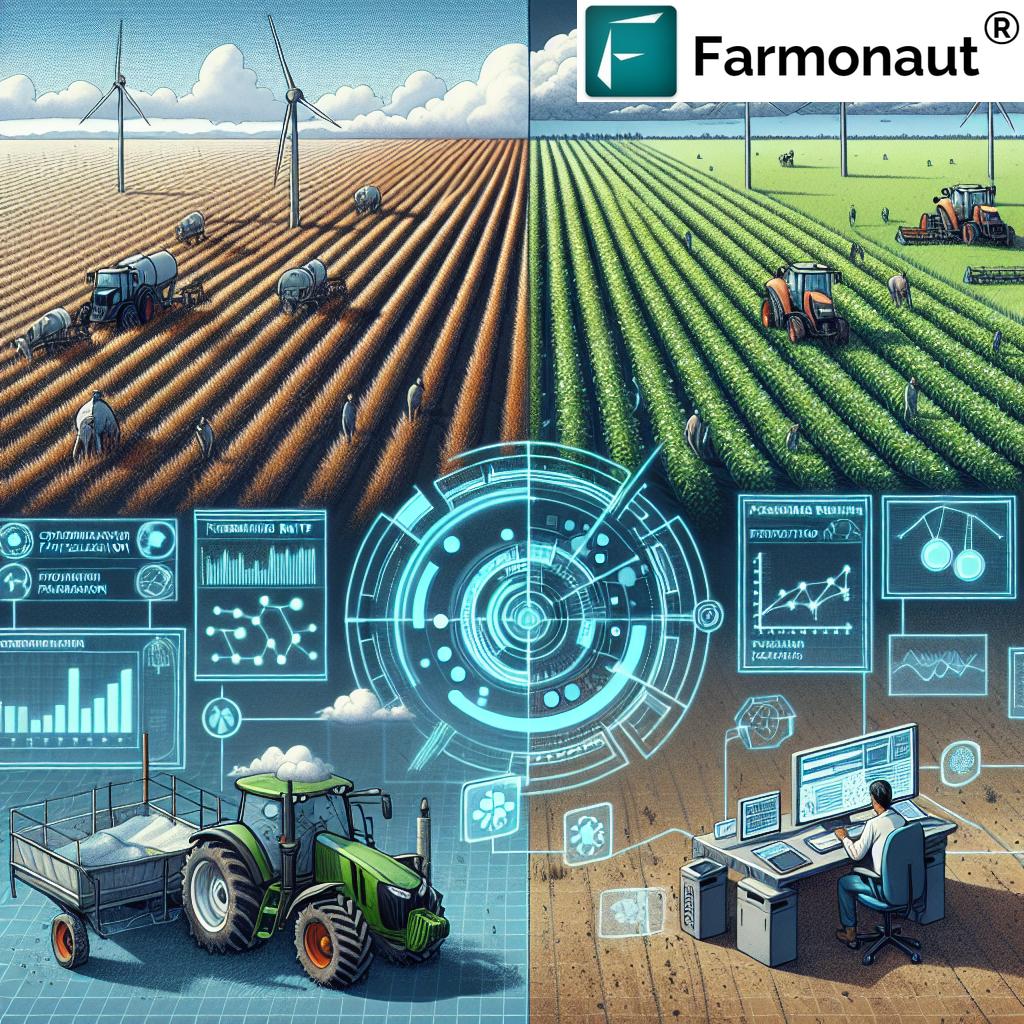
The Future of Precision Farming in the US
As we look to the future, several trends are likely to shape the evolution of precision farming in the US:
Artificial Intelligence and Machine Learning
AI and machine learning algorithms will become increasingly sophisticated, offering even more accurate predictions and recommendations for farm management.
Internet of Things (IoT) Integration
The proliferation of IoT devices on farms will create a more connected and responsive agricultural ecosystem, with real-time data flowing seamlessly between various systems.
Autonomous Farm Equipment
Self-driving tractors and other autonomous farm machinery will become more common, further reducing labor requirements and increasing efficiency.
Blockchain for Agriculture
Blockchain technology will play a growing role in ensuring transparency and traceability in the food supply chain, from farm to table.
Challenges and Opportunities in Precision Farming
While the future of precision farming in the US is bright, there are challenges to overcome:
Data Privacy and Security
As farms become more data-driven, ensuring the security and privacy of sensitive information will be crucial.
Skill Gap
The adoption of advanced technologies requires a new skill set. Training and education programs will be essential to prepare farmers and agricultural workers for this high-tech future.
Interoperability
Ensuring that different precision farming systems and tools can work together seamlessly remains a challenge. Industry-wide standards and protocols will be necessary to address this issue.
Accessibility for Small Farms
Making precision farming technologies accessible and affordable for smaller operations will be crucial for widespread adoption.
Despite these challenges, the opportunities presented by precision farming are immense. By embracing these technologies, US agriculture can become more productive, sustainable, and resilient in the face of growing global challenges.
The Role of Farmonaut in Advancing Precision Agriculture
In the rapidly evolving landscape of precision farming, innovative companies like Farmonaut are playing a crucial role in making advanced agricultural technologies accessible to farmers of all scales. Farmonaut’s satellite-based farm management solutions offer a range of tools that align perfectly with the trends we’re seeing in the US precision farming market.
Some key features of Farmonaut’s platform include:
- Satellite-Based Crop Health Monitoring: Utilizing multispectral satellite imagery to provide insights into vegetation health, soil moisture levels, and other critical metrics.
- AI-Driven Advisory System: The Jeevn AI system delivers personalized farm advice, weather forecasts, and crop management strategies based on real-time data analysis.
- Blockchain-Based Traceability: Enhancing transparency and trust in agricultural supply chains through secure, blockchain-powered traceability solutions.
- Resource Management Tools: Offering fleet management and carbon footprinting features to help agribusinesses optimize operations and monitor their environmental impact.
For farmers looking to leverage these advanced technologies, Farmonaut offers several ways to access their platform:
For developers and businesses looking to integrate Farmonaut’s satellite and weather data into their own systems, the company also offers API access:
Farmonaut API | API Developer Docs
Specialized Solutions for Precision Agriculture
Farmonaut offers a range of specialized solutions that address key areas of precision farming:
- Carbon Footprinting: This tool helps agribusinesses monitor and reduce their environmental impact, aligning with the growing focus on sustainable farming practices.
- Product Traceability: Leveraging blockchain technology, this solution ensures transparency and authenticity throughout the agricultural supply chain.
- Crop Loan and Insurance: By providing satellite-based verification, this feature streamlines crop loan approvals and reduces fraudulent insurance claims.
- Fleet Management: This tool optimizes the use of agricultural machinery, improving operational efficiency and reducing costs.
- Large Scale Farm Management: Designed for agribusinesses managing vast farming operations, this solution leverages satellite monitoring and AI-driven insights for efficient management.
These specialized solutions demonstrate how precision farming technologies can be applied to address specific challenges in modern agriculture, from environmental concerns to operational efficiency.
Empowering Farmers Through Technology
One of the most significant impacts of companies like Farmonaut is their ability to democratize access to precision farming technologies. By offering affordable, satellite-based solutions, they’re enabling farmers of all scales to benefit from advanced agricultural techniques.
This accessibility is crucial for several reasons:
- It levels the playing field, allowing smaller farms to compete more effectively with larger operations.
- It accelerates the adoption of sustainable farming practices across the agricultural sector.
- It promotes data-driven decision-making, leading to more efficient use of resources and higher productivity.
- It enhances the resilience of farming operations in the face of climate change and other challenges.
As we look to the future of US agriculture, it’s clear that precision farming technologies will play an increasingly central role. Companies that can provide accessible, user-friendly solutions will be at the forefront of this agricultural revolution, helping to ensure a more sustainable and productive future for farming in America and beyond.
Farmonaut Subscriptions: Tailored Solutions for Every Farm
Earn with Farmonaut: Join the Agricultural Revolution
Earn 20% recurring commission with Farmonaut’s affiliate program by sharing your promo code and helping farmers save 10%. Onboard 10 Elite farmers monthly to earn a minimum of $148,000 annually—start now and grow your income!
US Precision Farming Market Growth and Technology Adoption
| Year | Market Value (USD Billion) | Key Technology | Adoption Rate (%) | Primary Benefits |
|---|---|---|---|---|
| 2021 | 1.72 | GPS Guidance Systems | 65 | Improved accuracy in field operations |
| 2023 | 1.92 | Variable Rate Technology | 70 | Optimized resource use and cost savings |
| 2025 | 2.22 | Drone-based Imaging | 75 | Enhanced crop monitoring and analysis |
| 2027 | 2.56 | AI-powered Farm Management | 80 | Data-driven decision making and automation |
| 2029 | 2.96 | IoT Sensor Networks | 85 | Real-time monitoring and responsive farming |
| 2031 | 3.42 | Integrated Precision Farming Platforms | 90 | Holistic farm management and optimization |
FAQs About Precision Farming in the US
Q: What is precision farming?
A: Precision farming is an agricultural management concept that uses technology to observe, measure, and respond to variability in crops. It involves the use of GPS, sensors, robotics, and data analytics to optimize farm operations and increase efficiency.
Q: How does precision farming benefit US agriculture?
A: Precision farming offers numerous benefits, including increased crop yields, reduced input costs, improved environmental sustainability, and more efficient use of resources like water and fertilizers.
Q: What are some key technologies used in precision farming?
A: Key technologies include GPS guidance systems, variable rate technology, remote sensing, drones, IoT sensors, and farm management software.
Q: How is AI being used in precision farming?
A: AI is used in various aspects of precision farming, including crop health monitoring, yield prediction, pest and disease detection, and automated decision-making for resource management.
Q: What challenges does precision farming face in the US?
A: Challenges include high initial investment costs, the need for technical expertise, data privacy concerns, and ensuring interoperability between different systems and technologies.
Q: How is precision farming contributing to sustainable agriculture?
A: Precision farming promotes sustainability by reducing the use of water, fertilizers, and pesticides, minimizing soil degradation, and lowering the overall environmental impact of farming operations.
Q: What is the future outlook for precision farming in the US?
A: The future of precision farming in the US is promising, with continued growth expected as technologies become more advanced and accessible. Integration of AI, IoT, and autonomous systems will likely drive further innovation in the sector.
Conclusion: A New Era of Smart, Sustainable Agriculture
As we’ve explored throughout this article, the US precision farming market is on the cusp of a remarkable transformation. With projections indicating growth to USD 3.42 billion by 2031, it’s clear that advanced agricultural technologies are not just the future – they’re rapidly becoming the present.
From GPS-guided tractors to AI-powered crop management systems, precision farming is revolutionizing every aspect of agriculture. These technologies are enabling farmers to produce more food with fewer resources, reduce their environmental impact, and adapt to the challenges posed by climate change and a growing global population.
Companies like Farmonaut are at the forefront of this revolution, making sophisticated satellite-based farm management solutions accessible to farmers of all scales. By democratizing access to these advanced tools, they’re helping to level the playing field and ensure that the benefits of precision farming can be realized across the entire agricultural sector.
As we look to the future, it’s clear that the integration of technologies like AI, IoT, and blockchain will continue to drive innovation in precision farming. These advancements promise to make agriculture more data-driven, efficient, and sustainable than ever before.
For farmers, agribusinesses, and technology providers alike, the message is clear: the future of farming is precision-driven, and those who embrace these technologies will be best positioned to thrive in the evolving agricultural landscape. As we move forward, precision farming will play a crucial role in ensuring food security, promoting environmental sustainability, and shaping the future of agriculture in the United States and beyond.



